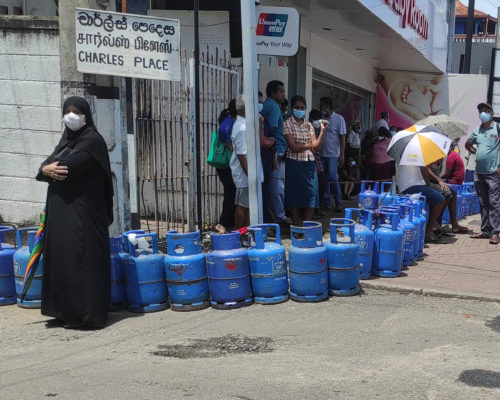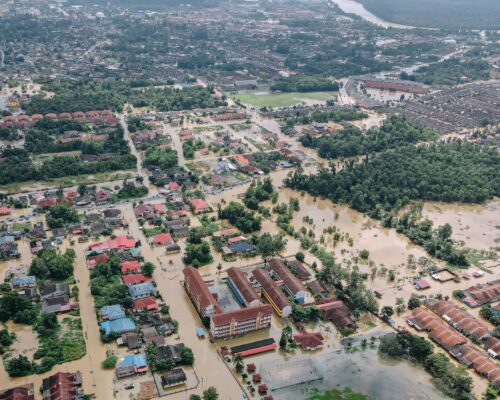Energy Crisis In India: What’s Next?
Source: NPR
07 November 2024 – by Eric Koons
The Energy Crisis in India is more than just a headline – it’s a pressing reality impacting the daily lives of millions and posing significant challenges to the nation’s economic ambitions.
Despite being the world’s third-largest producer of electricity, India grapples with frequent power shortages. In 2020, the country faced an energy deficit of about 0.4%, leading to regular blackouts even in metropolitan cities like Delhi and Mumbai.
India has faced some of its worst energy crises ever in recent years, and June 2024 saw the country’s largest energy deficit in 14 years. Furthermore, projections indicate that India could face a significant power shortfall in 2025 and beyond. The country’s power demand is growing at a rate of 6% annually and will double by 2045.
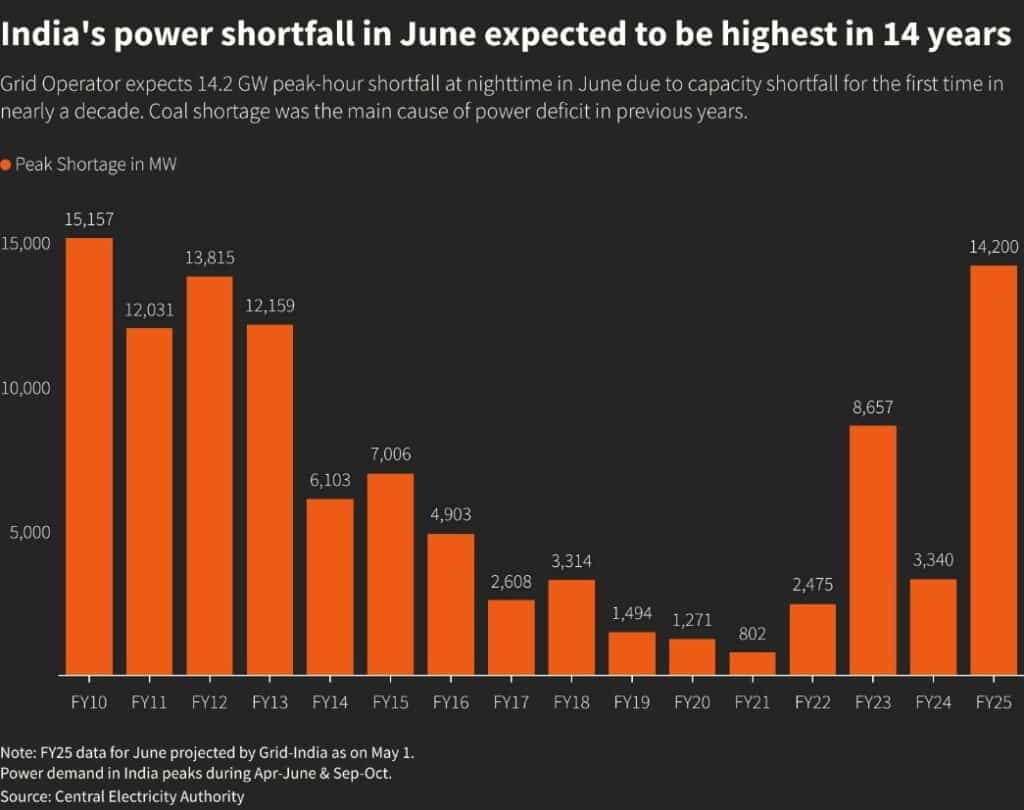
What’s an Energy Crisis?
An energy crisis occurs when energy demand exceeds supply, leading to shortages, blackouts and escalating costs that can cripple economies and disrupt daily life.
In India, frequent power cuts impact both industries and households. For instance, in 2021, states in the country’s northern region experienced power outages lasting up to eight hours for many during peak summer months.
The economic impact is substantial. Energy shortages and an unreliable power supply cost India about 1.9% of its GDP annually. This amounts to billions of dollars lost due to decreased industrial output and higher operational costs from alternative energy sources like diesel generators.
Additionally, Indians face an average of 10 power outages per month. For businesses, this leads to losses of over USD 10 billion in annual sales. Small and medium-sized enterprises are particularly vulnerable and lack resources for backup power solutions.
These examples highlight that India’s energy crisis is more than an infrastructural issue – it’s a significant economic challenge affecting the nation’s growth and the well-being of its citizens.
Major Causes of India’s Energy Crises
India’s regularly occurring energy crises arise from a combination of factors straining the nation’s energy resources and infrastructure. Rapid urbanisation and industrial growth have led to a surge in energy demand, putting immense pressure on existing systems and outpacing supply growth. The country’s heavy reliance on fossil fuels, particularly coal and oil, exacerbates the issue. Coal fired power plants alone account for over 70% of electricity generation, leading to resource depletion and increasing dependence on imports with volatile prices.
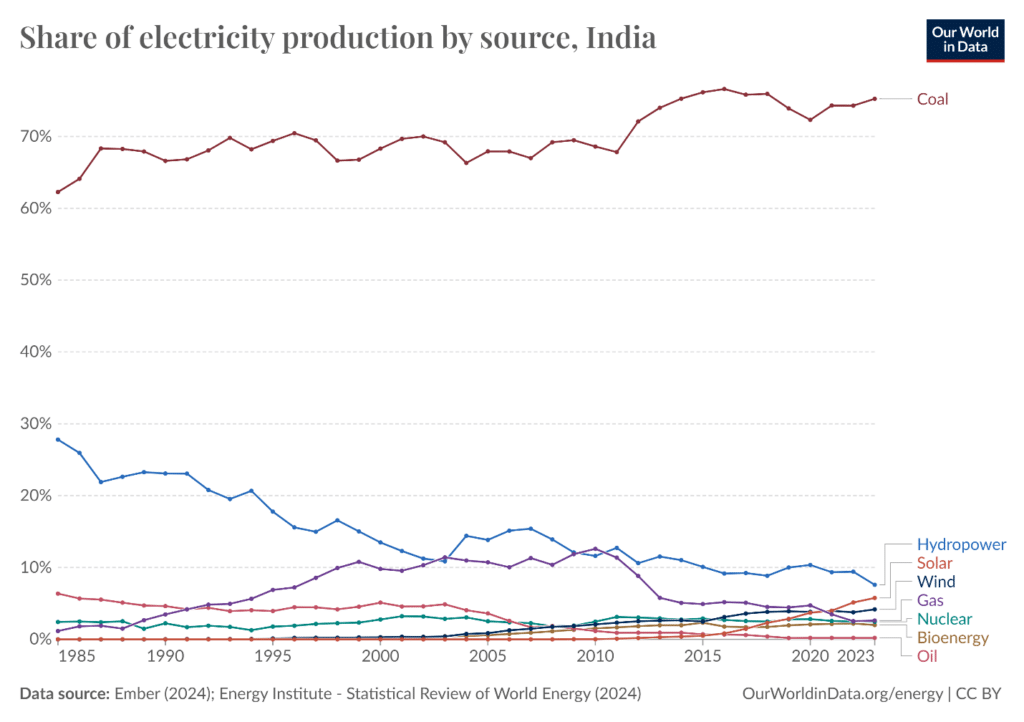
Inefficient energy infrastructure compounds the problem. Ageing power plants and outdated transmission systems result in high energy losses – around 15% in transmission and distribution compared to developed countries like the US at around 5%.
Regulatory and policy challenges, such as bureaucratic hurdles, slow adoption of renewable technologies and increasing additions of coal power capacity, further hinder the energy sector’s growth.
Consumption of Fossil Fuels Energy by Industries
Furthermore, industries in India heavily rely on non-renewable energy sources rather than available renewables. While many companies have made public renewable energy goals, they are largely failing to work towards them. For example, on average, large Indian electricity-consuming companies only source 5% of their energy from renewable sources.
This strengthens the country’s fossil fuel industry and oil and gas companies and disincentivises the development of renewable energy facilities. Renewable energy development is critical to bridging the existing energy supply-demand gap and meeting the country’s 2030 goal of 500 GW in renewable energy capacity.
Social and Environmental Impact of the Energy Crisis on India
The energy crisis in India has far-reaching impacts on people and the environment. Frequent power outages disrupt daily life and essential services, particularly in rural areas where about 670,000 people still lack electricity access. This hinders education and healthcare services. Plus, it perpetuates the use of biomass fuels for light and cooking – a significant contributor to indoor air pollution – which accounts for over 600,000 premature deaths annually.
Environmentally, heavy reliance on fossil fuels increases pollution and greenhouse gas emissions. India is the third-largest emitter of carbon dioxide globally, with the energy sector as the largest contributor.
Solutions to Prevent Energy Crises
To mitigate the energy crisis in India, it must adopt a multi-pronged approach.
Investment in Renewable Energy Resources
Investing in renewable energy is pivotal for mitigating India’s power crisis. The country has set a goal to achieve 500 GW of renewable energy capacity by 2030 and be net-zero by 2070. Progress has been significant, with installed renewable capacity reaching over 120 GW as of early 2023, including substantial solar and wind energy contributions.
Projects like the Bhadla Solar Park in Rajasthan, one of the world’s largest solar parks with a capacity of 2.25 GW, highlight India’s commitment to expanding renewable infrastructure. However, the country must continue rapidly expanding capacity to quadruple its current amount within the next six years to meet its 2030 target.
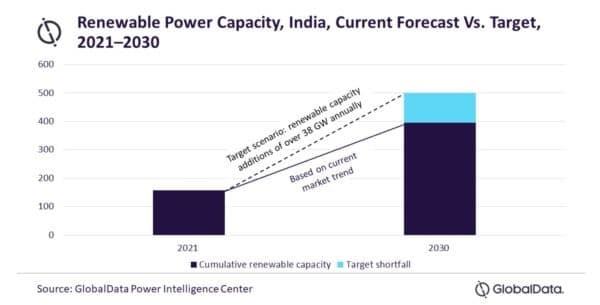
Energy Efficiency Measures
Implementing energy efficiency measures can significantly reduce energy consumption and has the potential to contribute to 56% of the country’s target of reducing emission intensity by 35% by 2030. Programs like the Perform, Achieve and Trade (PAT) scheme incentivise industries to adopt energy-efficient practices, resulting in savings of over 8.67 million tonnes of oil equivalent in the first cycle.
Policy Reforms and Incentives
India needs robust policy reforms to reduce energy issues that both incentivise renewables and disincentivise fossil fuels. These should include offering tax incentives and subsidies for renewable energy projects while implementing stricter regulations on fossil fuel use and reducing fossil fuel subsidies. Currently, fossil fuel subsidies are five times larger than subsidies for renewables.
The Path Forward for India’s Energy Future
India stands at a pivotal point in addressing its energy challenges. Despite progress in expanding renewable energy capacity, issues like infrastructure inefficiencies and policy obstacles remain.
Moving forward, India must accelerate investments in renewables, modernise its energy grid and implement supportive policies to prevent energy crisis in India. By taking these steps and fostering collaboration among government, industry and citizens, India can fill its supply-demand gap and address its energy crisis.
by Eric Koons
Eric is a passionate environmental advocate that believes renewable energy is a key piece in meeting the world’s growing energy demands. He received an environmental science degree from the University of California and has worked to promote environmentally and socially sustainable practices since. Eric’s expertise extends across the environmental field, yet he maintains a strong focus on renewable energy. His work has been featured by leading environmental organizations, such as World Resources Institute and Hitachi ABB Power Grids.
Read more



